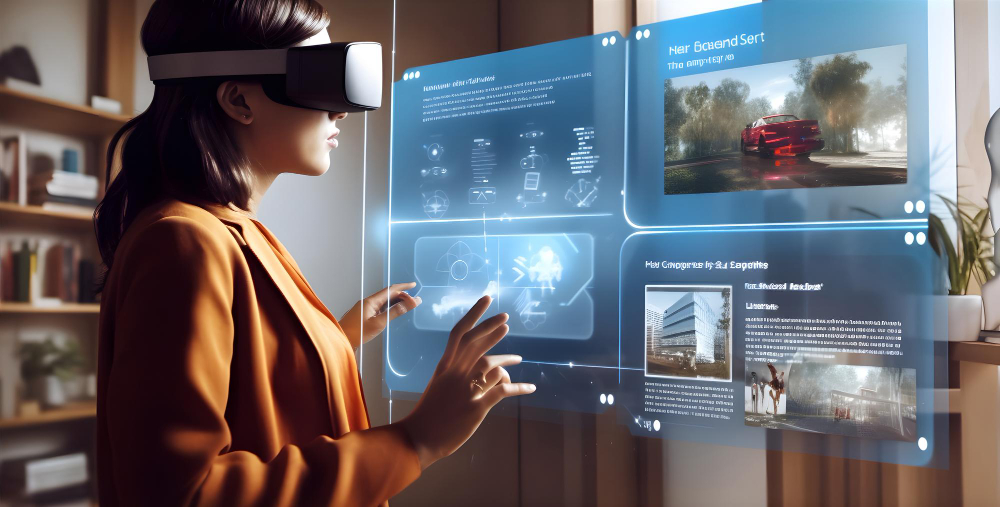Augmented Reality in Automation: Transforming Industries
Augmented Reality (AR) technology, which overlays digital information onto the physical world, is poised to revolutionize manufacturing industries in 2024 and beyond by seamlessly integrating with automation processes. This article explores how AR is making a significant impact on automation, with a focus on its applications and benefits.
Understanding Augmented Reality
At its core, augmented reality enhances the real-world environment with digital elements. This technology can be experienced through various devices such as smart glasses, tablets, smartphones, and more. By superimposing computer-generated images, videos, or data onto the user’s view of the physical world, AR provides an interactive and immersive experience.
AR Applications in Automation
Innovations in Manufacturing
Manufacturing leads the way in embracing AR. AR solutions are becoming increasingly sophisticated, providing real-time information to workers on the factory floor. This includes assembly instructions, quality control data, and machine operation details, all overlaid onto their field of view either via a tablet, directly onto a surface, or eventually smart glasses.
AR’s key benefit in manufacturing is its potential to reduce errors and improve efficiency. Workers follow step-by-step instructions with visual cues, minimizing mistakes. Quality control processes become more precise as AR systems highlight defects or deviations from the standard, translating to higher product quality and cost savings.
Enhanced Maintenance and Troubleshooting
AR’s impact extends to maintenance and troubleshooting scenarios. Complex industrial settings benefit from AR-equipped personnel who can access digital overlays on tablets or smartphones. Instead of having to walk all the way back to their desk or dig through drawers to find manuals for parts they can get instant access to it via AR technologies saving valuable time and increasing productivity. AR would even allow workers to compare alternatives like seeing if a F Series servomotor would be able to replace an R Series servomotor.
This real-time support reduces downtime, minimizes disruptions, and proves invaluable for training new employees. AR’s applications in these areas not only optimize operations but also enhance safety.
Logistics and Warehouse Optimization
AR streamlines logistics and warehousing with tools like digital overlays on handheld devices and one-day smart glasses instead. These overlays guide workers through efficient routes in warehouses, simplifying item location and scanning.
AR also aids inventory management by providing real-time information about stock levels and product locations, preventing stockouts, and simplifying inventory counts. In a world of booming e-commerce, AR optimizes logistics and warehouse operations.
Ergonomics and Worker Comfort
Another significant aspect of AR in automation is its contribution to ergonomics and worker comfort. In industries where workers must access complex information, perform repetitive tasks, or handle heavy machinery, AR can reduce physical strain and enhance the overall work environment.
AR-equipped devices allow workers to access critical information without constantly looking down at a screen or referring to printed materials, reducing neck and back strain. By offering hands-free guidance, AR improves the ergonomics of workstations and minimizes the risk of musculoskeletal disorders. This not only benefits worker well-being but also leads to increased productivity and reduced work-related injuries.
Benefits of AR in Automation
Improved Efficiency
AR in automation significantly enhances efficiency. It provides immediate access to information and instructions, leading to more accurate and timely task completion. This boosts productivity in manufacturing, reduces maintenance downtime, and expedites order fulfillment in logistics.
Enhanced Worker Safety
Worker safety is paramount in industrial settings. AR systems overlay safety instructions, hazard warnings, and emergency protocols onto the worker’s view. This real-time guidance ensures employees follow safety procedures, even in high-pressure situations. Additionally, remote collaboration through AR helps troubleshoot problems without exposing workers to potential dangers.
Reduced Training Time
AR simplifies onboarding for new employees, enabling them to learn on the job. The step-by-step instructions and digital overlays provided by AR systems expedite skill acquisition. This not only saves time and resources but also addresses labor shortages by helping bridge the skills gap.
Conclusion
Going forward, augmented reality is set to transform the automation sector by offering innovative solutions for a variety of use cases. From maintenance to logistics, remote collaboration, and ergonomics, AR enhances efficiency, improves worker safety and comfort, and reduces training times. As technology continues to evolve, we can expect even more advanced AR applications and increased adoption. The integration of AR into automation processes is not just a trend; it’s a transformative force that will shape the future of work and industry for years to come. Businesses that embrace AR in automation gain a competitive edge, staying ahead in an increasingly competitive market.



















